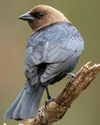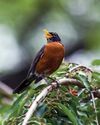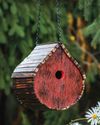
Whether in a patch of dense woods or in a suburban yard, owls use their unique and spectacular abilities to master their environment. And all their senses come together to help them thrive when most animals are sound asleep.
What a Sight
Take one look at an owl and you can see why vision is one of its sharpest senses.
“They have large eyes for their body,” says Lori Arent, assistant director of the Raptor Center at the University of Minnesota. “They take up something like 3% of their body weight. For humans, it’s far less than 1%.”
Their peepers are so large that they’re fixed in the eye sockets for support, so owls can’t move their eyes more than a degree or two. To compensate for that limited eye motion, owls are able to turn their heads 270 degrees.
This story is from the October/November 2019 edition of Birds & Blooms.
Start your 7-day Magzter GOLD free trial to access thousands of curated premium stories, and 8,500+ magazines and newspapers.
Already a subscriber ? Sign In
This story is from the October/November 2019 edition of Birds & Blooms.
Start your 7-day Magzter GOLD free trial to access thousands of curated premium stories, and 8,500+ magazines and newspapers.
Already a subscriber? Sign In

Clever Cowbirds
Learn more about these birds that are infamous for letting others raise their young

Ask the Experts
Pros offer spring plant care tips and tough IDs

Rustic diy Birdhouse
Whether you're hardcore handy or an everyonce-in-a-while crafty person, you probably have a small pile of scrap wood handy. Grab your tools and turn your extra materials into any house wren's dream nest box.

THE LATEST IN Lilacs
Learn about updated varieties of this timeless classic and how to take care of them

Meet the ORIOLES
GET TO KNOW eight TYPES SEEN THROUGHOUT THE U.S. AND WHAT MAKES EACH ONE STAND OUT

CBD FOR YOUR PAIN
Everyone feels the hurt as you age, but CBD can help you deal with it

Welcome, New Blooms
Update your yard with 2024's freshest florals

Western Blues
Beckon these regional bluebirds to your yard with nest boxes and mealworms

Incredible Eggs
Fun facts about these tough yet fragile wonders

Life Well Lived
Surprising facts about bird life spans